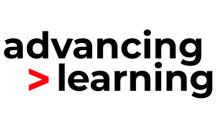If you ever watched a young child pick up a smart phone for the first time, you will know how confident they are and how much they enjoy technology. The point is that children adapt quickly to digital technology and enjoy learning using any aspect of it. Children are destined to belong to a digital world. Their future jobs and experiences will involve technology in a way that we cannot begin to imagine but it will happen. It is our responsibility to prepare our students for the next stage in their education so we must embrace technology and encourage its use wherever we can. 
Blended learning has become increasingly popular throughout 2020 in fact, I dare say it has become a buzz term. I have worked in teacher training and to my knowledge teachers have never been trained to teach in the ways they had to throughout 2020 and possibly beyond but they embraced the challenge, as they always do placing the students at the centre. Teachers were expected to plan and deliver lessons remotely via online resources and to plan engaging digital lessons that were meaningful. As a result, blended learning techniques became an essential tool for learning and teaching.
The digital resources that are available for the Max Maths course support blended learning extremely well and they can be used in many different types. If we use Max Maths Grade 6, we can see the opportunities on every page. If we focus on the first topic of numbers up to 1 000 000 you can see that the digital resources are engaging and address the content effectively. The opening page displays the objectives and a problem that students are working on. There is a headphone icon on the pages that when clicked on plays a voice pronouncing the key words correctly. The research informs us that students must learn the correct pronunciation of key words and terms to allow them to reach their potential in education. If words are mispronounced it prevents progression to higher levels so this resource is valuable. Students can play this over and over and practice saying the words as often as they need to. There is a tool bar at the top of each page with further digital resources to be used. They can use the timer to measure how long an activity takes which adds a further challenge to their learning. They can highlight important information on the page or add their own notes. The drop-down menu displays a list of the words and phrases that are spoken and interactive activities. For example, unit 2 interactive activity 1 asks students to fill in missing words to complete a review of their learning about evaporation. They can reveal the correct answers at the end of each sentence or at the end of the activity. This allows students to work at their own pace and check their answers without intervention from the teacher. This technique builds confidence in students particularly those that want to work privately. These activities can be used to review the learning at the end of each lesson or topic.
There are many opportunities for students to engage in blended learning techniques as they research and find solutions for themselves. A heads together activity asks students to research and download a resources to be used. Students could complete this using remote or flex blended learning by working remotely for the majority of the task. The extension task asks students to work with other students to see if they can put the grid back together again. This could be used in flipped classroom blended learning where students research and consolidate their learning about the content remotely. They can then carry out the activity in school and then use the internet to help them to learn to count in an additional language. Children enjoy digital learning and so we should embrace this. They should be allowed to use the resources when they want to allowing them to take control and ultimately be responsible for their own learning.
Words by Debbie Roberts.


